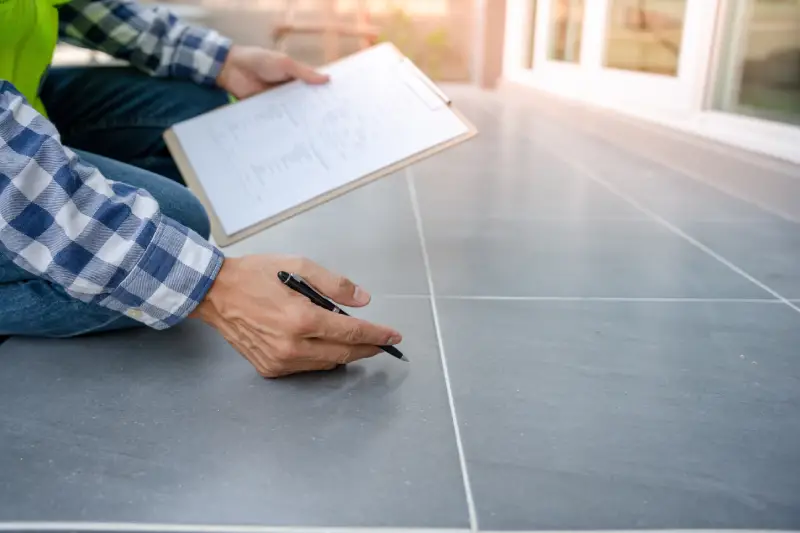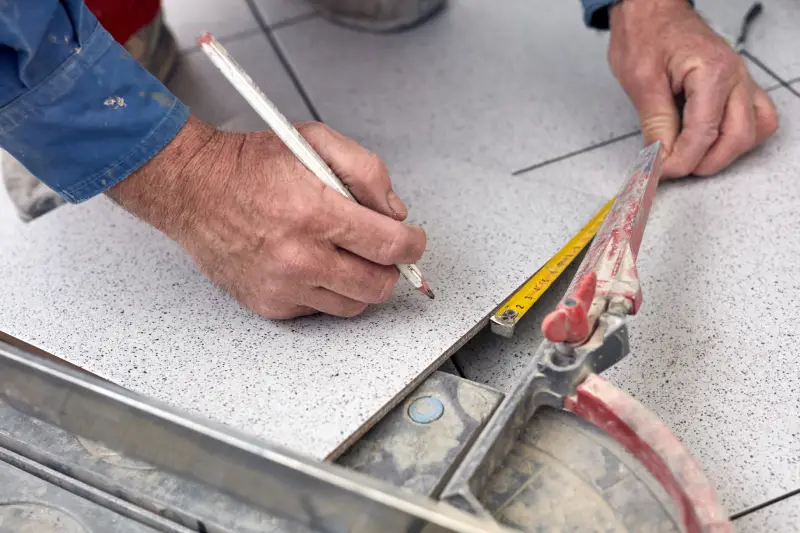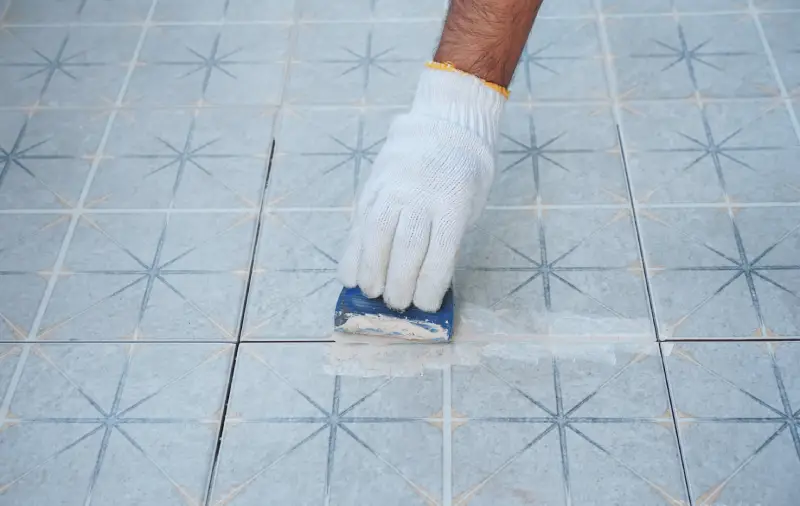Most often, you should remove existing tiles before installing new tiles. However, old tiles can sometimes be difficult or almost impossible to remove. If the original tile is still in excellent condition and you want to install tile over tile, you can do so, but follow the below steps to complete the project successfully.
Assessing the Existing Tile

When answering the question, “Can you install tile over tile?” the deciding factor is the condition of the underlying tile. Inspect the tile to determine whether it can handle the tile over-tile process. Ensure your old tile floor is level. Look closely for any cracks and check to make sure it’s a strong foundation. Any damages or issues could cause problems in the future.
Also, address any issues with your subfloor before adding another tile layer; in particular, determine whether your subfloor can handle the added weight. If you don’t know how to do this, contact a professional for assistance. Also determine what the height of the floor will be after applying the new tile to be sure it doesn’t affect any appliances, doors, or other obstacles, including creating a tripping hazard.
Surface Preparation
To prepare your surface for a tile-over-tile process, clean the surface with a multi-purpose cleaner. Also, inspect the adhesive by lightly tapping on each tile with a hard object. If it sounds hollow, that tile will need to be removed because the adhesive is no longer sufficient.
Once the dirt and grime have been removed, sand the old tile until it feels rough. This will give the new tile something to grip onto. Then, apply a very thin coat of thin-set mortar, filling in the current grout lines. This provides a more even foundation for the new tiles to adhere to. Let this thin-set mortar cure for 24 hours before moving on to the next step.
Choosing the Right Adhesive
Since you will be applying tile to tile instead of tile to the subfloor or other backing material, the type of adhesive you need might be different from the first time you tiled this space. Although the adhesive might work initially, it may not last in a tile-to-tile application. Even if it does last, you may later encounter issues with moisture and/or mold.
Oftentimes, thin-set mortar will work. It is moisture-resistant and heat-proof, making it ideal for bathrooms and kitchens. It is also a solid adhesive and resistant to mold. However, contact a professional to assist in evaluating your old tile, your new tile, and what adhesive would work best.
Epoxy mortar also can work well.. Since it cures quickly, it’s usually only recommended for professional use, though. Epoxy mortar is often used in industrial or commercial settings since it is harder to work with and more expensive.
Tile Layout and Design

Possibly the most difficult part of tile installation is determining how much tile is needed, tile size and grout joint size, as well as how much to purchase. When purchasing your materials, always buy 10% more tiles than you need and follow the famous “measure twice, cut once” rule.
To make sure you achieve the design you want, lay out your tiles before applying the adhesive, and always start in the center of the room so you don’t box yourself in.
Grouting and Sealing

Once your tile is installed, grout between each tile. Once the grout has cured, apply a sealant to prevent moisture and dirt from getting trapped.
The Benefits of Tile Over Tile
Sometimes, you just want a fresh look in your bathroom or kitchen. Installing tile over tile or painting over tiles might be the best way to achieve this look.
One of the benefits of doing it this way is the amount of time you will save. Since you won’t remove or dispose of the old tile, it halves your project time. Since you also won’t need to purchase any tools or materials for the removal process, installing tile over tile will make your project much more cost-effective.
It is also reasonably eco-friendly since you won’t dispose of any old or used materials.
Troubleshooting
As you inspect your existing tile, you may come across a few tiles that need to be removed or replaced. If this number adds up to a large section of your floor, then abandon your plan to install tile over tile and remove the old tiles instead..
Post-Installation Care
Once your new tiles have been installed, keep them clean and well-maintained. If you notice any cracks or necessary repairs, make them quickly so that moisture or dirt doesn’t get trapped underneath the tiles.
Get Professional Tile-Over-Tile Installation with Mr. Handyman®
Although installing new tiles can be done by an inexperienced homeowner, you will likely encounter a number of difficulties and need professional help for numerous points. Find the local handyman near you to perform this difficult job. Here at Mr. Handyman, tiling is one of our handyman services.
Our professional installation jobs are always backed by the Neighborly Done Right Promise™. Save yourself the time and hassle. Request service with Mr. Handyman today!
 Click to call
Click to call


 Click to call
Click to call

